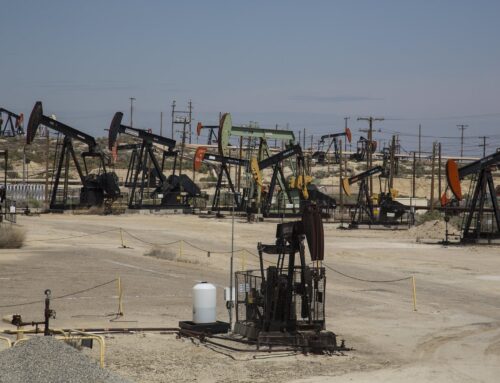Report
Gas Giveaways: Methane Losses Are a Bad Deal for Taxpayers
Read the full report as a PDF.
In exchange for giving resource developers the right to produce publicly owned oil and natural gas from federal lands, the Department of the Interior collects various payments and fees, including royalties on the sale value of extracted oil and gas. As oil production on federal lands significantly expanded over the last decade, numerous independent reviews identified longstanding weaknesses in the existing management systems and practices in the Interior Department’s oil and gas programs. These weaknesses make them susceptible to waste, fraud, and abuse.
- Oil and gas operators continued to lose large amounts of publicly owned natural gas from federal lands in 2016.
- The Bureau of Land Management has charged a royalty on just a small portion – 11 percent – of all gas lost over the last decade. In 2016, the portion of lost gas being charged a royalty declined for the first time.
- Outdated policies allowed for a large increase in gas lost from federal lands over the last decade, prevented better accounting of it, and caused fewer royalties to be collected from it.
Taxpayers for Common Sense (“TCS”) requested information about the disposition of federal gas on onshore federal leases from the Office of Natural Resource Revenue (“ONRR”), the Department of the Interior (“DOI”) office that manages revenues from development of federal energy and natural resources. This report presents an analysis of the dataset ONRR released in response in the context of ongoing policy changes and proposals concerning the loss of natural gas from federal land. The report adds to previous TCS work on the subject including the 2014 report, “Burning Money,” and the 2016 “Gone with the Wind” report.
Our own analyses since 2014 reveal the existing oil and gas management practices led to the dramatic under collection of royalties owed to federal taxpayers. Among the problems identified are the inability to accurately track natural gas that is leaked, vented, or flared during production on federal lands, and the lack of clarity on when to appropriately charge royalties on that lost gas.
This report provides an overview of the best available data on the magnitude of gas lost on federal lands, and what those losses reveal about the failure of the policies guiding Interior Department agencies.
Key Findings
- In 2016, royalties were charged on just 16.3 percent of all natural gas lost by oil and gas companies operating on federal lands, down from 29.6 percent in 2015.
- Of all gas lost in the decade 2007-2016, only 11 percent was charged a royalty.
- Overall, oil and gas companies reported losing 25.4 billion cubic feet (bcf) of natural gas in 2016, bringing the total amount of gas lost over the decade 2007-2016 to 209.7 bcf.
- Gas losses from federal lands have increased in recent years. The 2016 lost gas total is more than double the amount reported in 2010, but is down from the peak in 2015.
- The large increase in annual gas losses from 2007 to 2016 was driven by flaring from oil wells on federal lands. In 2007, oil well flaring composed just 17 percent of total lost gas, compared to 75 percent in 2016, the highest level yet recorded.[i]
- The gas lost on federal lands in 2016 was worth an estimated $75.5 million, while gas lost over the decade was worth an estimated $1.07 billion.[ii] At the standard onshore royalty rate of 12.5 percent, this gas represented potential revenue of $134 million. Instead, ONRR reports collecting just $18.5 million, or 13.8 percent of potential royalties.
- The assessment of royalties on lost gas remains highly varied between the eight states from which 99 percent of the gas originates.
- Half of all gas lost in the last five years (2012-2016) was reported in New Mexico, and the BLM charged a royalty on nearly one third of it.
- For the half of total gas losses recorded in the seven other states, royalties were charged on just 2.3 percent.
[i] See the report Appendix for why this could be an underestimate.
[ii] Estimates for the value of lost gas were found using average sale prices for lost gas by state and year calculated from sales volumes and sales values reported by ONRR, where available. Where state-specific values were not available, the average national sale price for the year was used. Amounts are reported in nominal U.S. dollars (i.e. not adjusted for inflation).
Photo credit: blake.thornberry via flickr
Related Posts
Most Read
Recent Content
Our Take
Dec 17, 2025 | 5 min readLetter
Dec 15, 2025 | 10 min read
Stay up to date on our work.
Sign up for our newsletter.
"*" indicates required fields











